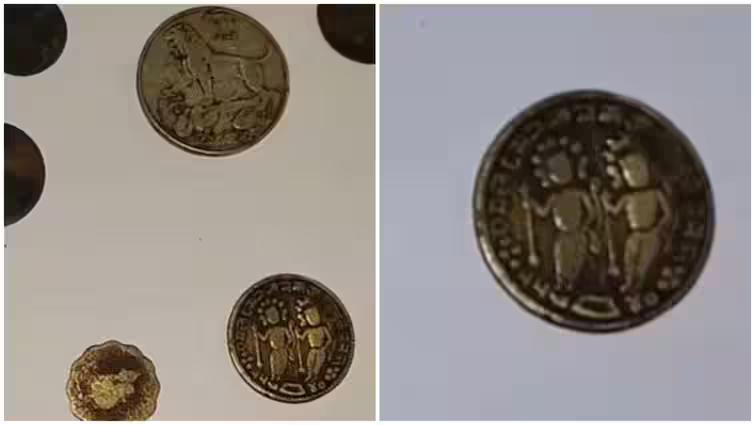 |
|
The recent discovery of ancient coins in Sambhal, India, has sparked significant interest in the region's rich history. District Magistrate Rajender Pensiya announced the finding, specifying that the coins unearthed at the Maharishi Dadhichi Ashram and Amarpati Kheda sites date back to periods as early as 1200 AD and 1700 AD. This discovery offers a fascinating glimpse into the lives and transactions of people who lived centuries ago. The sheer age of these coins provides invaluable data for historians, archaeologists, and numismatists alike, shedding light on the economic and social structures of the past. Further analysis of the coins' metallurgical composition, inscription styles, and iconography will undoubtedly reveal much about the craftsmanship of the time, the trade routes that connected the region to others, and the cultural and religious practices prevalent during those eras.
One particularly intriguing find is a coin believed to date back to approximately 1740 AD. This coin bears inscriptions of Ram, Lakshmana, and Janaki, prominent figures in Hindu mythology. The presence of these religious figures on the coin suggests a potential link between religious beliefs and currency, possibly indicating the patronage of rulers or the influence of religious institutions on the economy of the time. The discovery also raises questions about the extent to which religious iconography was integrated into everyday life and commercial transactions. Further research into the coin's origin and the symbols used could provide insights into the political climate and cultural context in which it was produced and circulated.
The District Magistrate's announcement of plans to build a museum to house these newly discovered artifacts is a welcome development. A dedicated museum would not only ensure the preservation of these historically significant objects but also provide an educational resource for the public. The museum can serve as a central hub for research and display, allowing scholars and the general public to learn more about the region's past. It could include interactive exhibits, detailed descriptions of the coins' historical significance, and perhaps even 3D models or reconstructions of the sites where they were discovered. A well-designed museum will foster a greater appreciation for the cultural heritage of Sambhal and attract tourists, boosting the local economy and contributing to the preservation of the region’s identity.
The discovery of these ancient coins underscores the importance of ongoing archaeological research in unearthing and preserving India's rich history. The meticulous excavation, careful documentation, and planned preservation efforts demonstrate a commitment to understanding the past and safeguarding its legacy for future generations. The planned museum highlights the recognition that such historical artifacts are not merely objects but valuable resources that can illuminate our understanding of the world and the societies that have shaped it. By investing in the protection and accessibility of these findings, we preserve not only physical artifacts, but also the stories and lessons they hold, enriching our collective knowledge and appreciation for the past.
Furthermore, the discovery raises questions about the broader archaeological potential of the area. The fact that these coins were unearthed at the Maharishi Dadhichi Ashram and Amarpati Kheda sites suggests that further excavation may reveal additional artifacts of historical and cultural significance. Systematic and thorough archaeological surveys of these sites, as well as nearby locations, are crucial to fully understand the historical and cultural importance of this region. Such excavations could reveal not only more coins but also other artifacts like pottery, tools, jewellery, and even building remains that could add to our understanding of daily life, societal organization and technological development in ancient India.
The preservation efforts associated with the project, including the planned museum, should not only focus on the physical objects but also on the contextual information surrounding the finds. Proper documentation of the excavation process, detailed descriptions of the sites, and records of the coins' positions and associations with other artifacts are crucial for creating a comprehensive historical narrative. This information, combined with the artifacts themselves, would allow future researchers to refine their interpretations and build upon the current understanding of the area's past. Incorporating this level of detail into the museum's exhibits and accompanying documentation will be vital in ensuring that the site's story is presented accurately and comprehensively to the public.
